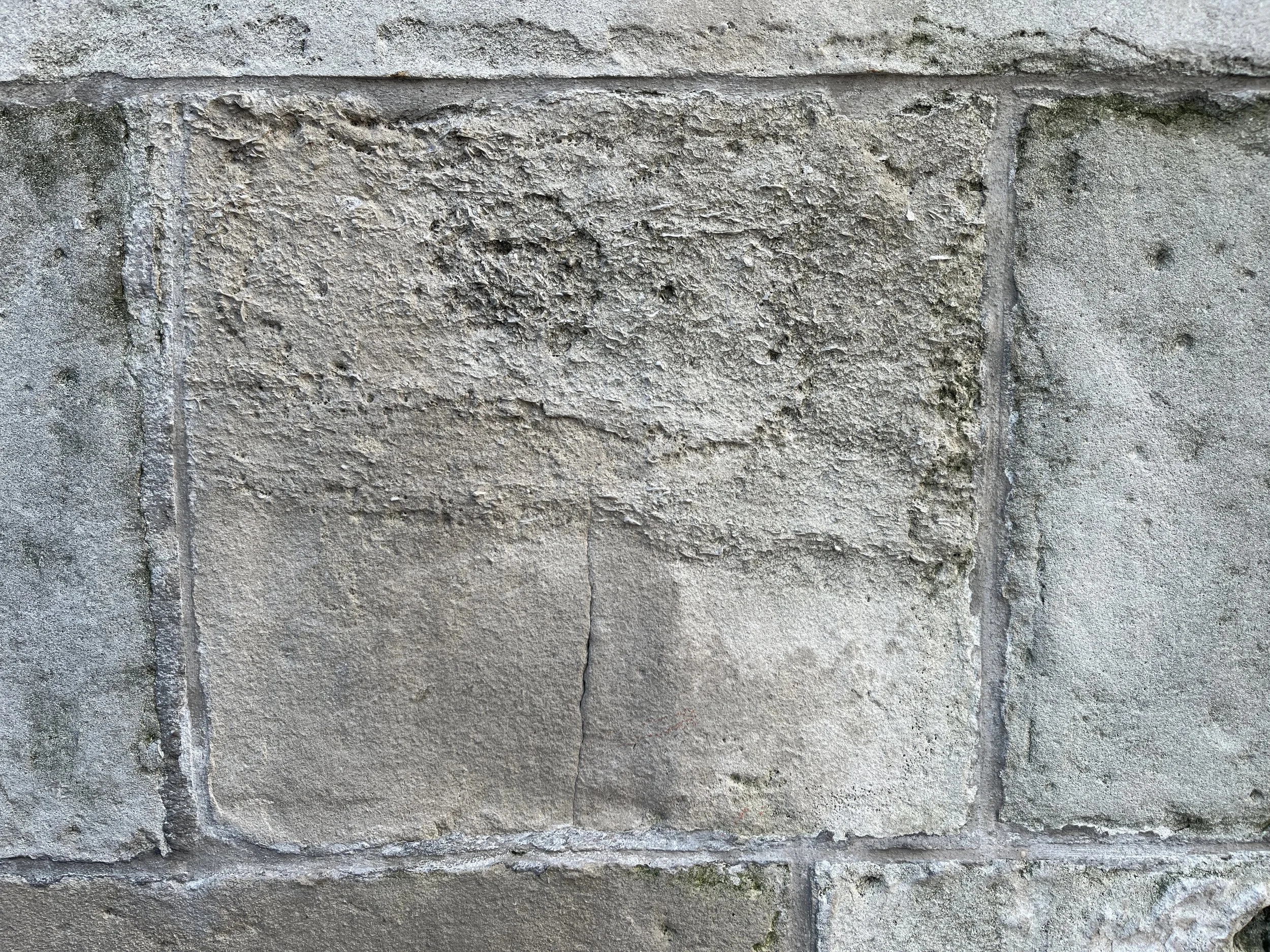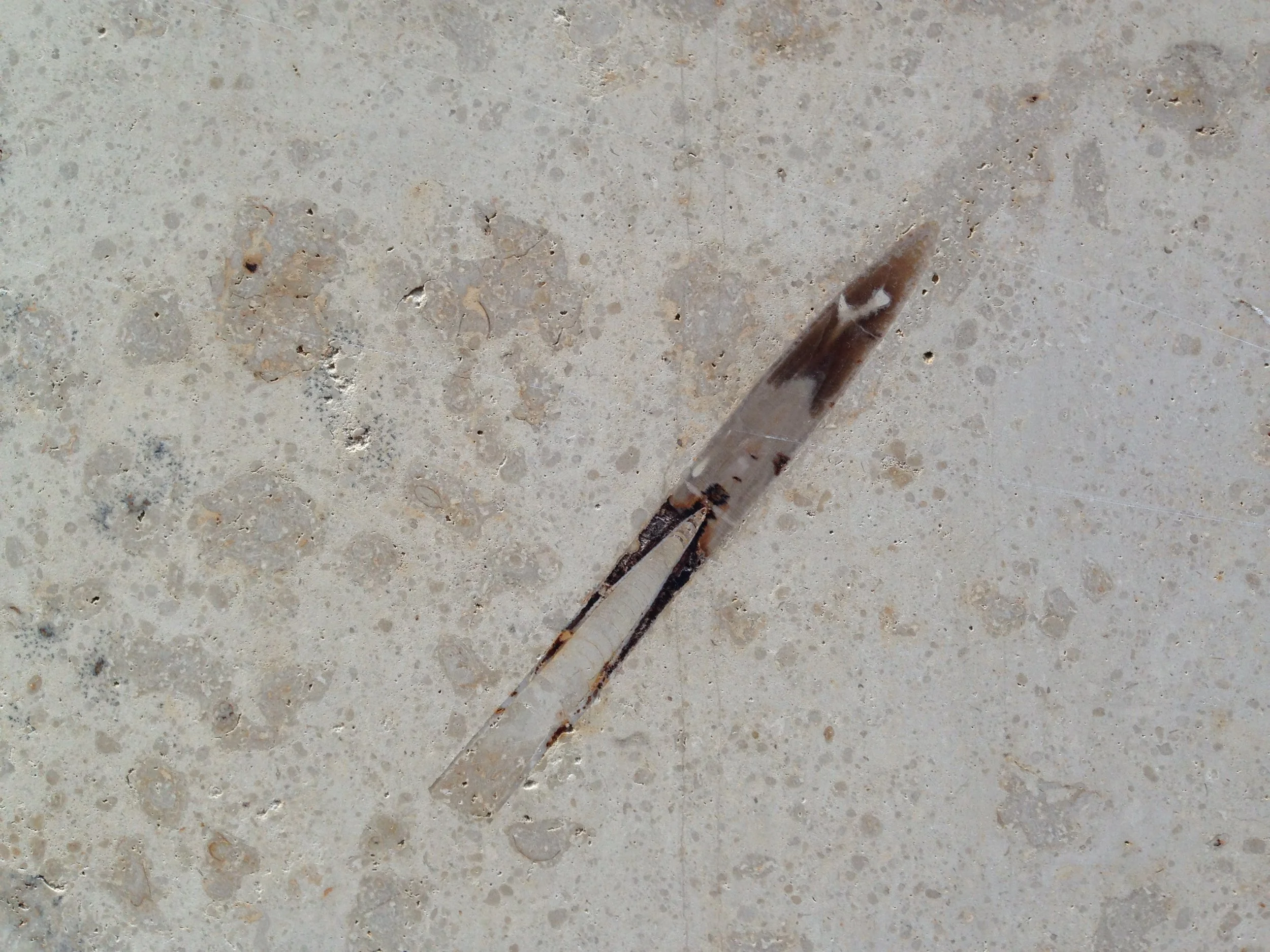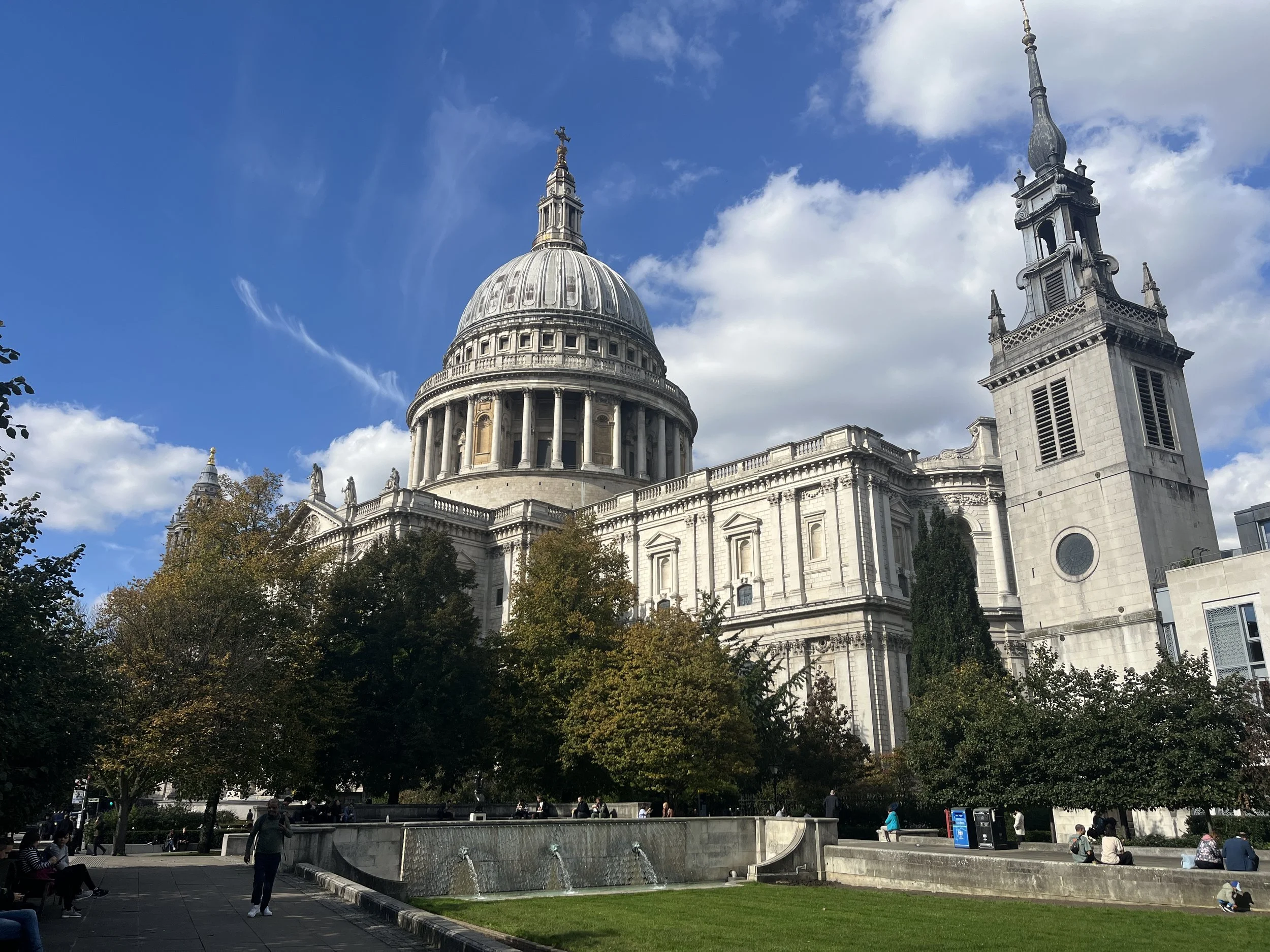Ruth Siddall on Urban Geology
Listen here or wherever you get your podcasts.
In the podcast, Ruth Siddall explains the kinds of geology on display in the building stone of cities and takes us on one of her favorite urban geology walks in London.
Podcast Illustrations
Images courtesy of Ruth Siddall unless otherwise noted.
Urban Geology Walk in the City of London
Monument commemorating the Great Fire of London of 1666 which started close to this site and raged across the City for the next three days. The main building material is Portland Stone (top right), the stone chosen by Christopher Wren and his fellow architects to rebuild London in a monumental style. Portland Stone has a long history of quarrying, but only came into mainstream use following the Great Fire. It is quarried from the Isle of Portland on the Dorset Coast from the uppermost strata of the Jurassic succession. There are a number of varieties of Portland Stone but this is the most frequently used, called Whitbed. It is a pale grey limestone with scattered fossils, mainly the oyster shell species Liostrea.
Santa Maria del Fiore Cathedral and Baptistry. Brunelleschi kept good records of the sourcing of the stone.
Photo: Sailko
Malta Memorial commemorating the siege of Malta during the Second World War between 1940 and 1942. It is constructed from stone brought from the Oligocene Lower Coralline Limestone of the Isle of Gozo in the Maltese archipelago and is packed with fossil sand dollars, flattened sea urchins of the species Scutella subrotunda.
Minster Court, with its pinnacles and spires, it has been described as ‘postmodern gothic.’ It was completed in 1991 when exotic granites were at the height of fashion in architecture. The building is clad with Brazilian Rosa Torcicoda, a pink granite migmatite. This is a rock that has been frozen in the process of melting at depth and this, along with deformation, accounts for its streaky texture. It has a granitic composition and is composed of pink potassic feldspar, white plagioclase and grey quartz. The black mineral is the mica, biotite. This is a very old rock, quarried from the 2.75 billion year old Campo Belo Metamorphic Complex located in the São Francisco Craton of the state of Minas Gerais, Brazil. Although metamorphosed at 2.75 Ga, the protoliths of these rocks are over 3 billion years old.
St. Paul’s cathedral in London, completed in 1710, was built with Portland Stone. There is a rich archive documenting architect Christopher Wren’s ordering of Portland Stone from the quarries.
Fossils in the pale-brown stone walls of Plantation Place. This is an Upper Jurassic limestone sourced from the Southern Frankonian Alb of Bavaria. It comes from the Treuchtlingen Formation, representing a marine platform limestone with sporadic sponge reefs and bioherms (reef knoll comprising a pile of calcareous material that had previously accumulated on an ancient sea floor). Top left: nautiloid; top right: belemnite; bottom left: ammonite and belemnite; bottom right: nautiloid.













